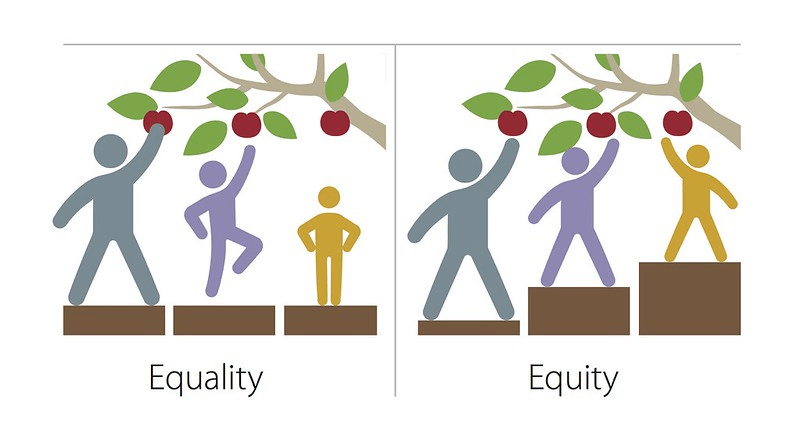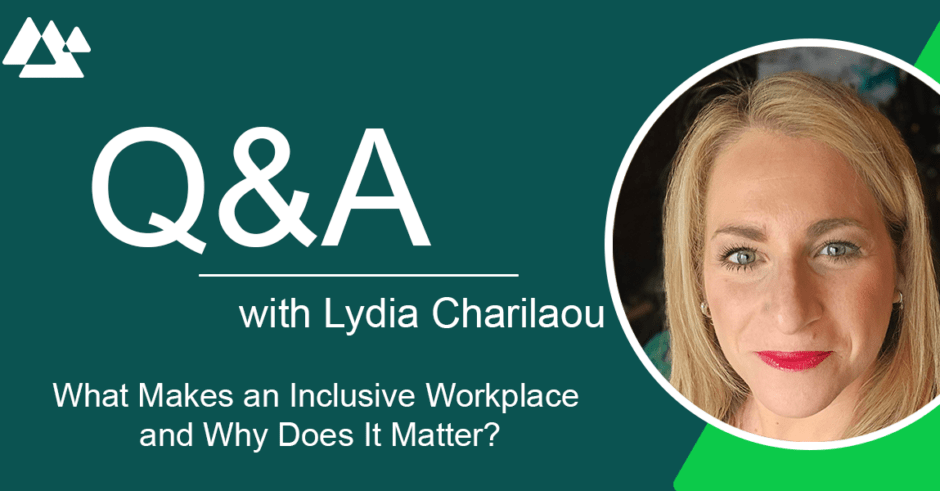In today’s changing work environment, promoting inclusivity and understanding it is very important. Companies are starting to see the need to not just support diversity, but to make it a core part of their operations. We spoke with Lydia Charilaou (Founder at Labyrinth Consultants), a trailblazer in fostering inclusive workplaces with over a decade of experience in this space. We discovered more about her passion for equity, and her insight into transforming organisational cultures, championing diversity, and empowering teams to thrive by creating spaces where every voice matters.
In this riveting interview, Lydia spills the tea on equity vs. equality (spoiler alert: they’re not the same), breaks down how to turn “taboo” topics into coffee-break conversations, and unveils the secret sauce for organisations to flaunt their neurodiversity commitment, both in the boardroom and on the company picnic blanket.
Equity vs. Equality
How would you describe the difference and do you believe organisations have adapted?
“Equity and equality differ significantly in organisational impact. Equality treats everyone the same, offering identical resources and opportunities. It’s a ‘one size fits all’ approach. In contrast, equity recognises diverse needs and allocates resources based on individual circumstances for an equal outcome (engagement, motivation and belonging).
The emphasis on understanding the difference and the impact it makes on organisational culture is imperative. Evident in the backlash the SHRM (the US equivalent of the CIPD) recently received when they decided to drop the E (for equity) from their labelling of Inclusion and Diversity efforts. The Forbes article quotes HiBob’s Chief Marketing officer’s views on the responsibilities of HR organisations to lead the charge in making sure we are celebrating and investing in diversity and inclusion whilst making sure that equity isn’t pushed to the side.*
*Forbes Article: ‘Major HR Trade Group Drops The ‘E’ For Equity From DEI—Prompting Online Firestorm’

(Image: https://www.flickr.com/photos/56812802@N08/31655988501)
While equality remains foundational (e.g. processes for equal gender pay for equal roles), we must delve deeper to reveal equity. For instance, uniform training may not effectively engage those with varying needs or skill levels.”
“Many organisations have made a significant shift from focusing solely on equality to embracing equity. Two key areas with the most meaningful shift:
Flexibility – Many organisations have considered the unique needs of their diverse workforces and adapted the way they work. Reviewing and adapting remote working options, flexible hours, or tailored parental leave. Organisations such as Flexa were born out of the increasing need for equity around career/employer choices to support unique needs.
Tailoring – Companies are increasingly developing support systems for distinct customer needs and employee groups. Organisations such EY have invested in programmes such as Neuro-Diverse Centres of Excellence enhancing client innovation by leveraging diverse strengths.”
Taboo Culture
How Exactly Can Companies Create a Culture that is Open to Talking about Traditionally ‘Taboo’ Topics?
Creating a culture open to discussing traditionally ‘taboo’ topics requires intentional effort and supportive structures. The areas I believe organisations should be hyper-focused on investing in are:
Demonstrated Leadership Commitment: Leaders who model openness and vulnerability, whilst sharing their own experiences with sensitive topics will normalise and encourage a trusting environment.
Give employees a voice: through safe spaces such as forums like employee resource groups (ERGs) and open mic sessions for honest dialogue. Encourage employees to share personal stories through internal communications to build empathy and understanding. Provide channels for anonymous feedback to encourage the sharing of concerns and experiences. Integrate discussions of taboo topics into regular business activities, such as meetings and performance reviews.
Educate and Celebrate Diversity: Offer workshops on mental health, diversity, and inclusion to equip employees with the knowledge to engage respectfully. Acknowledge and celebrate diverse backgrounds and perspectives through events and recognition programmes. These strategies foster a supportive, inclusive environment where all topics can be discussed openly, enhancing overall organisational health.”
Neuroinclusion
What is neuroinclusion and how can organisations both demonstrate this within and signal this externally?
Neuroinclusion is a term used when an organisation demonstrates that it accepts, values, respects and celebrates all thinking types. All employees are given the opportunity to choose, recognising that all brains are different and have unique needs.
“The top three items organisations can do to demonstrate neuroinclusion are;
Offer flexibility: Create work environments (flexible hours and remote work) that cater to diverse sensory and cognitive needs.
Update and adapt employee life cycle processes such as Talent Attraction: Give candidates a choice to demonstrate their capabilities through a practical task achieved in collaboration with the hiring manager. This provides a good sense to both candidate that the organisation respects and values alternative ways of thinking and gives the hiring manager hands on perspective of the candidate’s capabilities in a real-life scenario.
Partnerships: Collaborate with neurodiversity advocacy organisations to educate and mentor employees whilst engaging allies.”
Register for a FREE Launch session ( Why Holistic Inclusion Matters in the Workplace) with Lydia Charilaou here.




